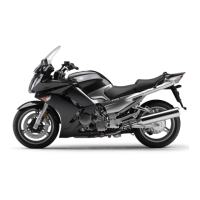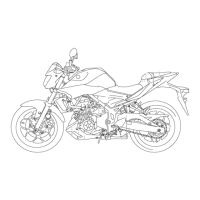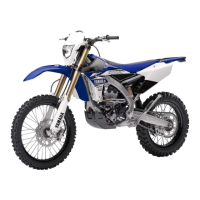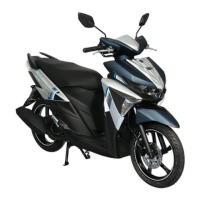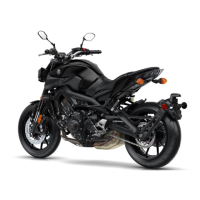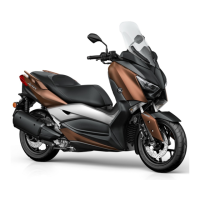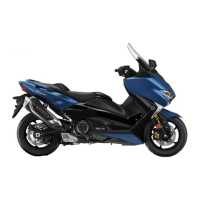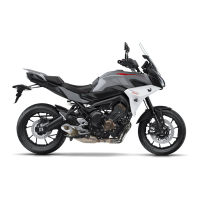Do you have a question about the Yamaha FJR1300AS 2017 and is the answer not in the manual?
Details manufacturer and importer information for the vehicle's compliance.
Welcomes the owner, provides manual usage notes and dealer advice.
Explains symbols like WARNING, NOTICE, TIP for understanding manual.
Emphasizes owner responsibility, safe riding practices, and protective gear.
Covers CO risks, vehicle loading guidelines, and accessory safety warnings.
Warns about aftermarket parts and provides transport instructions.
Identifies key components in left/right views and controls/instruments.
Explains immobilizer system, steering lock, and various indicator lights.
Introduces the cruise control system and how to operate it.
Details the various displays and functions of the meter unit.
Explains handlebar switches, drive mode, and shifting mechanisms.
Explains brake pedal, lever, and the Anti-lock Brake System.
Details the function and operation of the traction control system.
Covers fuel tank cap, refueling safety, and seat adjustments.
Explains suspension, sidestand, and DC jack functions.
Lists essential checks before operating the vehicle.
Lists checks for throttle, cables, lights, and sidestand switch.
Emphasizes manual use, familiarizing with controls, and starting the engine.
Explains shifting and provides tips for better fuel economy.
Details engine break-in and safe parking instructions.
Highlights maintenance importance, tool kit, and maintenance schedules.
Explains panel removal, spark plug checks, and engine oil service.
Covers final gear oil, coolant, and tire maintenance procedures.
Explains maintenance for brake/clutch fluids, cables, and stands.
Covers battery, fuse replacement, and troubleshooting.
Warns about cleaning finishes and provides storage guidelines.
Lists key vehicle, engine, fuel, and oil specifications.
Details specifications for chassis, tires, brakes, suspension, and electrical systems.
Lists battery, bulb, and fuse specifications.
Explains identification numbers and diagnostic connector location.
| Displacement | 1298 cc |
|---|---|
| Bore x Stroke | 79.0 mm x 66.2 mm |
| Compression Ratio | 10.8:1 |
| Fuel System | Fuel Injection |
| Ignition | TCI |
| Final Drive | Shaft |
| Front Tire | 120/70 ZR17 |
| Rear Tire | 180/55 ZR17 |
| Wheelbase | 1, 545 mm |
| Wet Weight | 296 kg |
| Length | 2, 230 mm |
| Width | 750 mm |
| Rake (Caster Angle) | 26° |
| Trail | 109 mm |
| Engine Type | Liquid-cooled, 4-stroke, DOHC, 4-cylinder |
| Maximum Torque | 138.2 Nm (14.1 kg-m) @ 7, 000 rpm |
| Transmission | 6-speed |
| Front Suspension | Telescopic fork |
| Rear Suspension | Swingarm |
| Front Brake | Dual 320mm discs, ABS |
| Rear Brake | 282mm disc, ABS |
| Seat Height | 805mm / 825mm |
| Fuel Capacity | 25 Liters |



